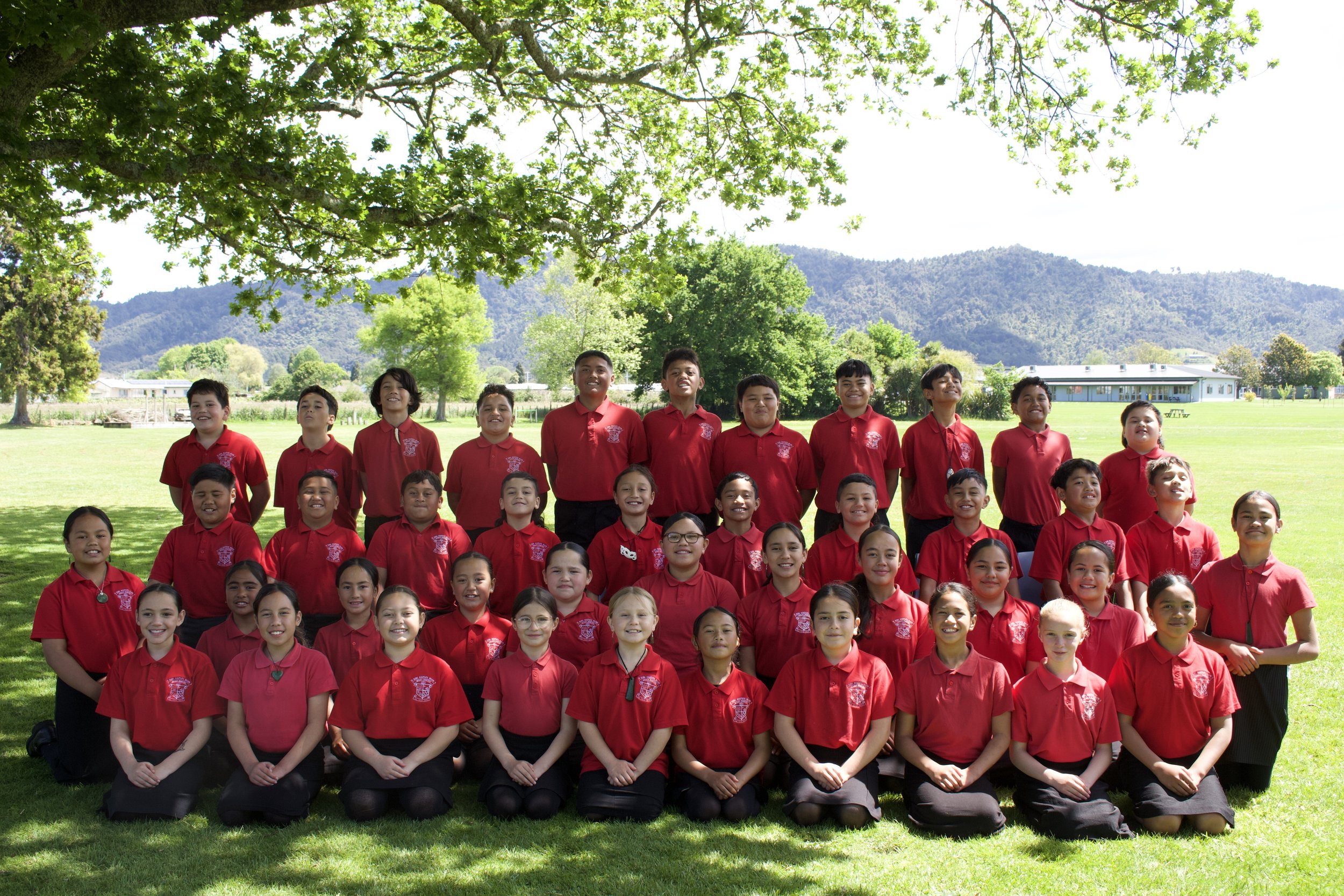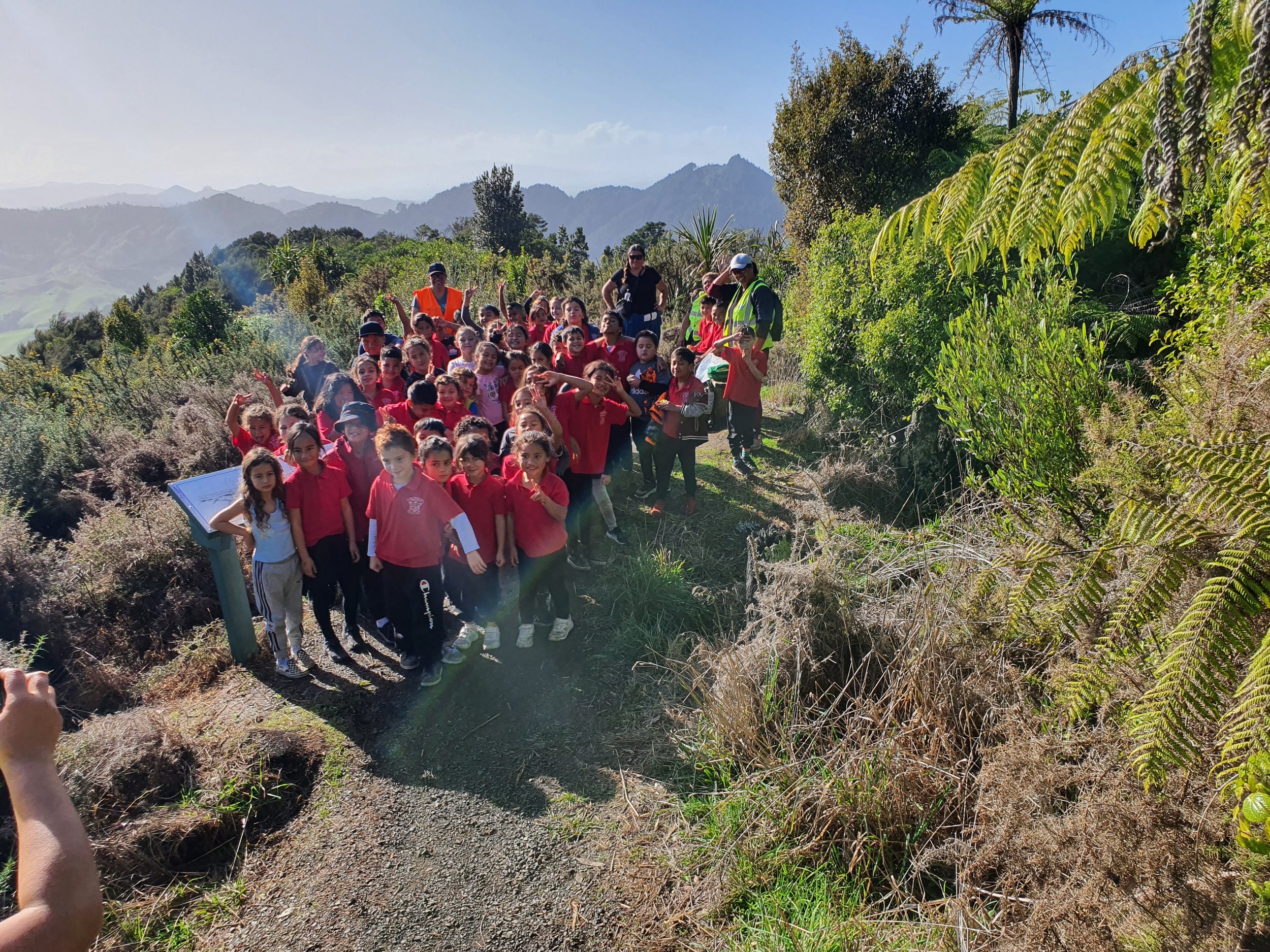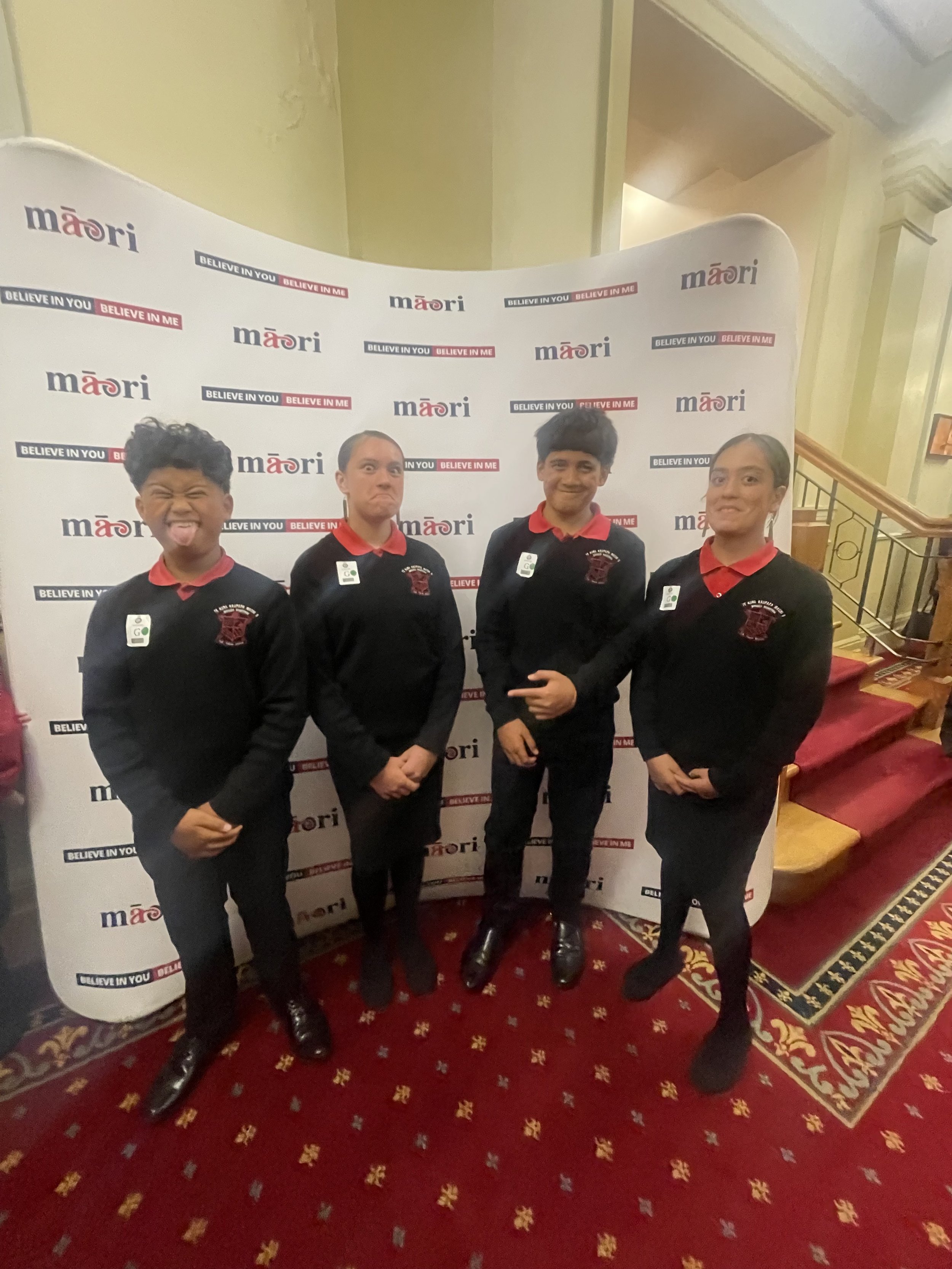
Curriculum - Marau
The Te Kura Kaupapa Maaori o Bernard Fergusson Curriculum Statement is based on Te Awa o Waikato as the symbolic metaphor of life long learning as it journeys through the Waikato and passes sites of significant events in Waikato history.
The River is a living embodiment of our tribal identity and as such is a living taonga. Students are kaitiaki of the River and therefore responsible for their own life-long learning journey. The journey in education ebbs and flows just as the River does in its flow to the open sea.
Students enter as young children in Year 1 and embark on a learning journey that sees them exit Te Kura Kaupapa Māori o Bernard Fergusson on the cusp of teenage-hood with physical, intellectual, social, cultural and spiritual skills and knowledge ready for the next phase in their journey toward becoming young Waikato Tainui adults ably prepared to contribute on the national and international stage.
The waka that traverse the waters of the Waikato symbolise the richness of knowledge that will be attained during the learning journey from many local, regional, national and international sources to ensure a well-provisioned journey. Waka are guided by Korotangi the sacred talisman who led Tainui waka to Aotearoa from Hawaiiki with Waiwawa as our guiding taniwha. They are symbolic of traditional knowledge and our Waikato heritage.
The kaihautu symbolise the many people involved who contribute to the rich store of knowledge that the child enters and exits with. At times the kaihautu may be teachers in the kura and at other times they may be parents, Boards of Trustees members, leaders, kaumatua and experts from outside the kura. We are all responsible for ensuring that our students succeed and that the waka they embark on are well positioned and ably led. All adults that students come into contact with should be regarded as kaitiaki of the Kiingitanga and Waikato Tainui.
Tuurangawaewae moo te Kiingitanga
The formal schooling journey begins at Tuurangawaewae symbolising the heart of the Kiingitanga under the leadership of Te Arikinui Kuini Ngawai hono i te po. It is here that the programme-planning phase begins with each teacher developing a rich programme relevant to the needs of the students as determined by Te Kura Kaupapa Maaori o Bernard Fergusson with alignment to Te Marautanga o Aotearoa. The teacher fills the waka with appropriate people and resources to make the learning journey that traverses both te ao Māori and te ao Paakehaa capturing knowledge from both and utilising skills learned from both.
On the journey there are three significant landmarks which house symbolic kete of learning:
Te Kete Maatauranga Maaori - Taupiri
‘Ko Taupiri te Maunga’
Te Kete Maatauranga Maaori is placed at Taupiri. It contains traditional Maaori knowledge across all learning endeavours and is underpinned by te reo o Waikato me oona tikanga. From this kete, teachers along with the students can select areas of knowledge and assessment that best fit the programme developed at Tuurangawaewae.
Topics of study reflect the needs of the student as determined by the whaanau, marae, hapu and iwi; the talents and expertise of teachers; and draw on iwi expertise and resources to ensure authenticity. All learning is through the medium of te reo Māori.
Preferential areas to study: significant Waikato Tainui landmarks, events, customs and practices and figures in Waikato history especially with regard to the establishment and maintenance of Tuurangawaewae Marae i.e. narratives of determination, perseverance and commitment
Te Kete Maatauranga Tauiwi - Mangataawhiri
‘Ko te Pou o Mangataawhiri’
Te Kete Maatauranga Tauiwi is placed at Mangataawhiri where British troops invaded the Waikato in July 1863. It is the point of te whakaeke o te Paakehaa ki roto o Waikato. It is where the two worlds collided! It is a significant landmark in a number of ways and it symbolises the need to equip students’ with knowledge, skills and strategies to be able to also function effectively in the Western World.
The kete contains traditional Western knowledge across all fields of learning and is underpinned by the English language and customs. It complements Te Kete Maatauranga Maaori while concomitantly meeting the needs of traditional mainstream curricula and qualifications. Learning is bilingual from Year 6 to Year 8 i.e. English as a formal subject of study is introduced at Year 6.
Preferential areas to study: continued literacy and numeracy development in both Maaori and English, exploring the digital divide, career guidance, advice and planning
Te Kete Maatauranga Koioranga - Te Paina
‘Te Nohoanga o te Pani me te Rawakore’
Te Kete Maatauranga Koioranga is placed at Te Paina, the original stronghold of Te Puea. It was from here that she moved the families to Ngaaruawaahia to fulfil the prophecy of her tupuna Kiingi Tawhiao – ko Ngaaruawaahia tooku tuurangawaewae!
The kete contains traditional and modern knowledge across the fields of mathematics, higher learning and tribal affairs. It contains Western and Maaori knowledge across a number of fields that encourages students to choose career pathways that contribute to iwi growth and development. TE KURA KAUPAPA MAAORI o BERNARD FERGUSSON CURRICULUM
Preferential areas to study: ‘Mahia te mahi hei painga moo te iwi’, retaining/restoring mana whenua, mana moana, indigenous creativity and resourcefulness


